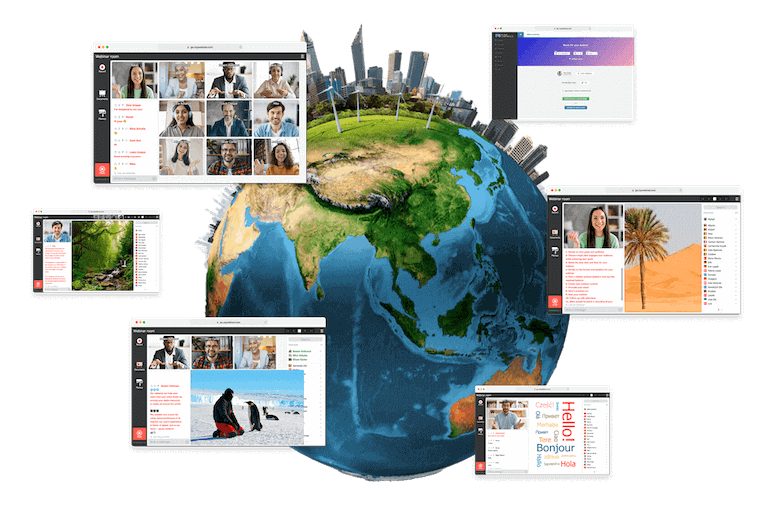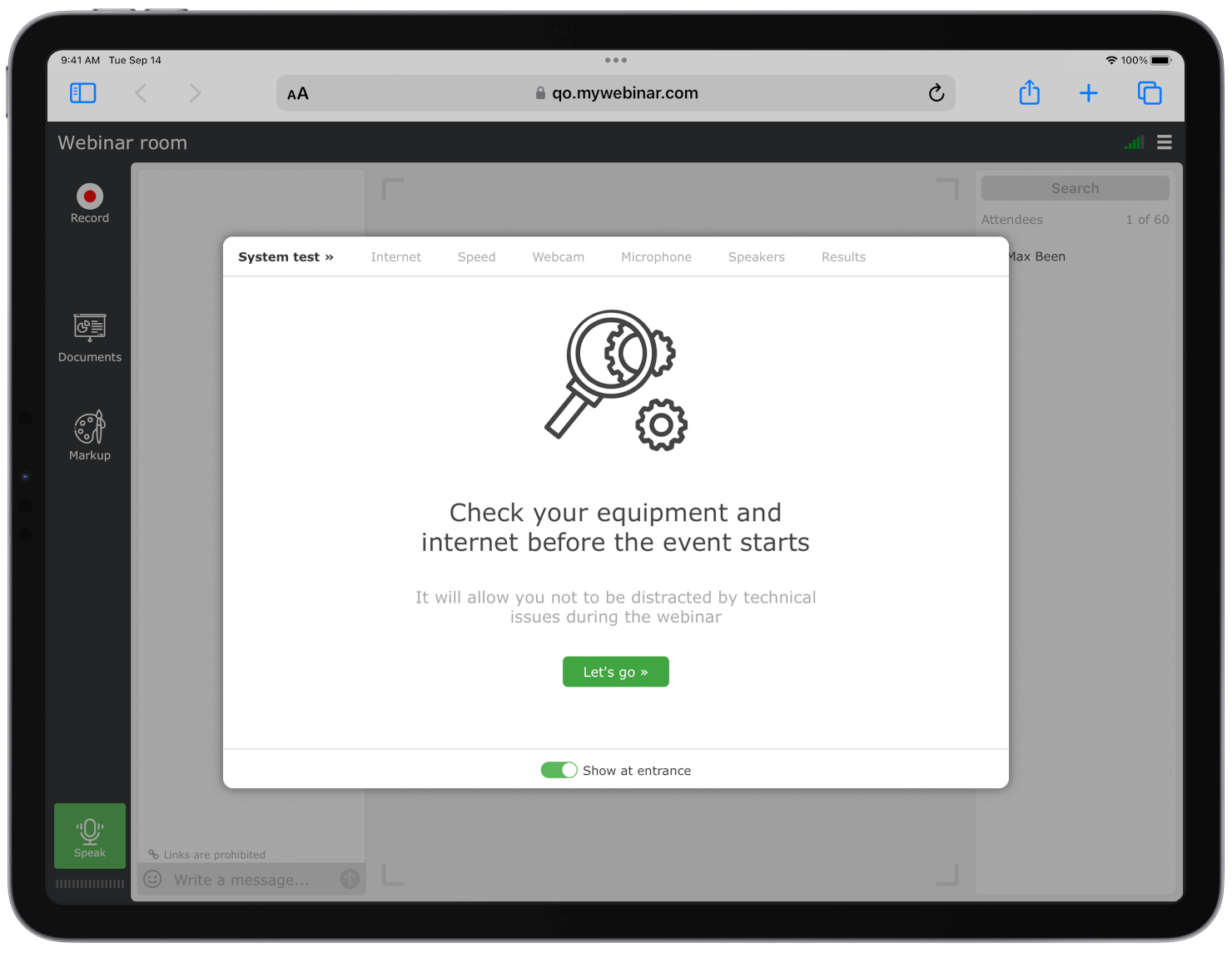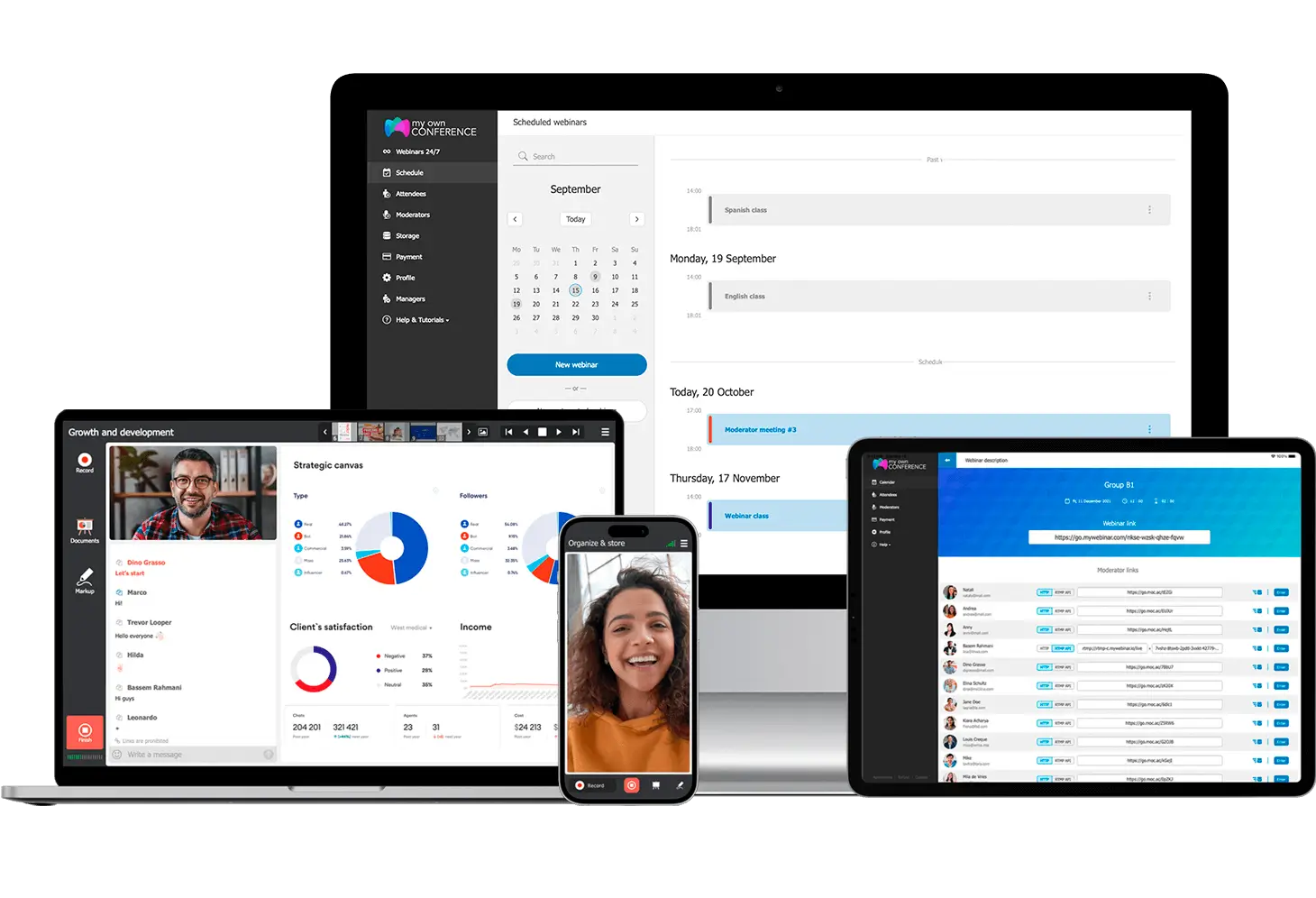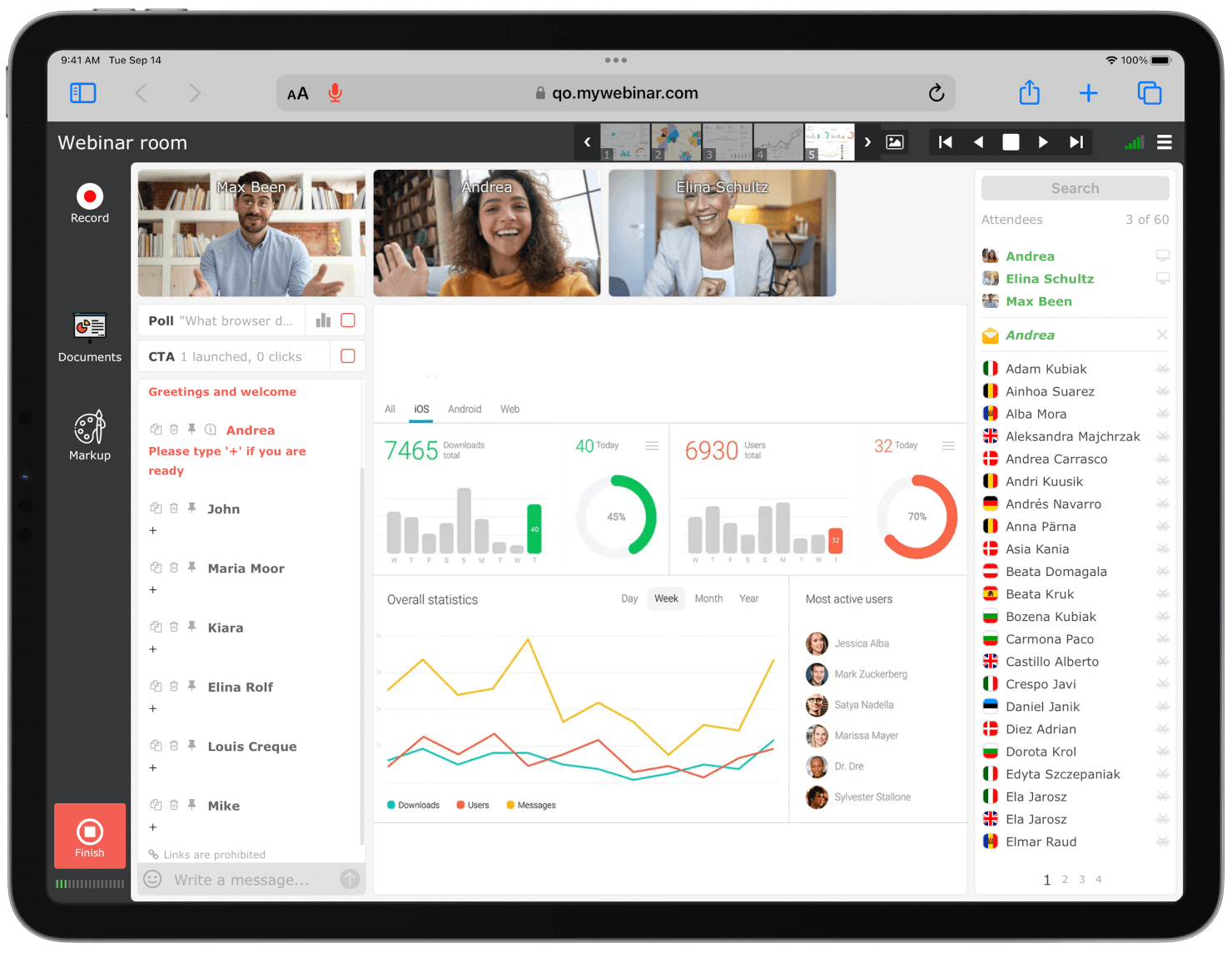
Webinars are real-time online events that enable people from different parts of the world to connect, interact, and share information live.
The Power of Webinars in Modern Marketing
Summarize with
Table of contents
One defining characteristic of webinars is their interactivity, allowing participants to share, discuss, and engage instantly. Here, we’ll explore the unique features, advantages, applications, and essentials for hosting a successful online event.
👉 See also:
- Sharing video and presentation
- Call-to-Action (CTA)
- Chat
- Whiteboard
- Polls, surveys, and testing online
- Desktop sharing
- MP4 Recording and sharing
- Automated webinars with virtual chat & CTA
Benefits of webinars
Webinars are advantageous for both organizers and attendees, offering convenience and flexibility. Some of the key aspects that make this format so effective include the ability to join from virtually anywhere and the elimination of travel hassles. As a result, webinars are gaining popularity across various fields.
Organizers no longer need to rent venues or arrange in-person logistics; hosting an event is just a few clicks away.
Common uses of webinars
From education to business training, webinars serve diverse purposes across various sectors.
1. Education and training
Educators can expand their reach, providing accessible learning opportunities for students without requiring them to travel. Participants can attend training from wherever they are, and educators avoid the costs of physical event logistics.
Webinars are particularly valuable for businesses to update and train employees efficiently, especially when teams are spread across different locations. This saves significant costs associated with gathering people in one place.
2. Marketing and product promotion
Webinars are highly effective for marketing purposes, especially in showcasing products or services. Online sessions often attract more engagement since video content typically performs well.
Furthermore, these events help build long-term customer relationships. Explaining products, answering questions, and conducting follow-up surveys show customers that their needs are valued.
Necessary tools for hosting a webinar

To join a session, attendees should have a reliable internet connection and basic audio equipment like a headset. Presenters do not need any special tools because a regular computer with a microphone and speakers is enough.
Most modern computers come equipped with these features, and no technical expertise is required. If you’re comfortable using search engines or watching online videos, you’re ready to host.
How webinars operate

Once you have your topic and duration, the first step is scheduling the event. Create an account on a webinar software platform, select your date, time, and session length.
Planning and customization
The planning phase is crucial. Use the platform’s tools to tailor the event settings to your objectives and audience. You can also upload supplementary materials to aid in information delivery.
Make sure to check that everything works properly, including your webcam, microphone, headset, and internet connection, before you begin.
Hosting the event

After sending the invite link, confirming setup, and beginning the session, you have the opportunity to connect with your audience. Interaction during live events typically involves speaking directly to attendees from your computer.
Interactive tools such as screen sharing can enhance the experience by showing visuals like slides, graphs, or images, making information more engaging.
Participants can listen, watch, and communicate with you and each other through chat features. Answer questions, address comments, and, when necessary, allow participants to speak. Though you can’t see attendees, they can interact with the content and one another.
In the event of disruptive attendees, simply use moderation tools to ensure a smooth experience for everyone.
At the end of the event, attendees can share questions and insights with each other, and a recording is often sent to anyone who missed it or wants to review. Sending a post-session survey is a great way to gather feedback for future improvements.
And, final words is
In conclusion, truly understanding webinars means realizing that they are much more than simple live streams. They are active opportunities for meaningful interaction, brand growth, and learning. When you take advantage of their flexibility and allow anyone with an internet connection to join from anywhere in the world, you open a strong channel to reach and connect with your audience. With thoughtful planning, the right tools, audience-focused content, and engaging elements such as Q&A sessions, polls, and screen sharing, you create an experience that continues to make an impact even after the session ends. When used strategically for marketing, training, or community growth, webinars can help build trust and long-term relationships. In the end, their true value comes from your ability to turn a virtual event into a memorable and meaningful experience that connects with your viewers and delivers real results.
FAQ
The main advantage of webinars is their accessibility. They eliminate the need for physical venues and save time by allowing people to participate from anywhere in the world.
A stable internet connection, a computer, webcam, and microphone are the basic tools you’ll need. Most modern laptops and mobile devices come with these features built-in.
They are widely used for purposes like education, product marketing, and corporate meetings.
Nowadays, webinars have many uses. However, webinars are mainly used for online education, advertising your product or service, and organizing business meetings.
An expert behind the simplified online meeting and webinar software platform, MyOwnConference. In today’s flexible work environment, Dan offers invaluable life hacks, in-depth reviews, and savvy tips for organizing, promoting, and excelling in virtual conferences and webinars.











